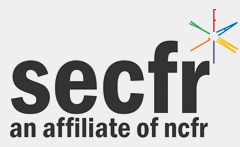Bereavement Support for Children in Schools
Proposal Focus
Practice
Presentation Type
Presentation
Abstract
Children’s experience with death is a normative experience occurring around 8 years of age for most (Knight, Elfenbein, & Capozzi, 2000). Though this is an expected part of childhood, the need for and effectiveness of bereavement support for children is outlined in the literature as these experiences can put children at risk for emotional and behavioral difficulties (Samide & Stockton, 2002; Siddaway, Wood, Schulz, and Trickey, 2015). The current presentation outlines the exploratory implementation of grief support groups in a middle and elementary school for children dealing with the death of a loved one to support them in their grief. These 5 weekly sessions were designed and executed using evidence-based and peer-reviewed literature, which will be further discussed in this presentation, along with the theoretical perspective through which this project was approached. Finally, the tool developed to evaluate the outcomes of these sessions will be shared in conjunction with the end results.
Keywords
Childhood bereavement, Death, Child Bereavement Groups, Grief, Social Isolation
Location
Yorkshire
Start Date
3-4-2020 2:05 PM
End Date
3-4-2020 3:15 PM
Bereavement Support for Children in Schools
Yorkshire
Children’s experience with death is a normative experience occurring around 8 years of age for most (Knight, Elfenbein, & Capozzi, 2000). Though this is an expected part of childhood, the need for and effectiveness of bereavement support for children is outlined in the literature as these experiences can put children at risk for emotional and behavioral difficulties (Samide & Stockton, 2002; Siddaway, Wood, Schulz, and Trickey, 2015). The current presentation outlines the exploratory implementation of grief support groups in a middle and elementary school for children dealing with the death of a loved one to support them in their grief. These 5 weekly sessions were designed and executed using evidence-based and peer-reviewed literature, which will be further discussed in this presentation, along with the theoretical perspective through which this project was approached. Finally, the tool developed to evaluate the outcomes of these sessions will be shared in conjunction with the end results.
![Southeastern Council on Family Relations Conference [2018-2020]](/assets/md5images/a0d3661d5139dc9b769a57be6f085156.png)

